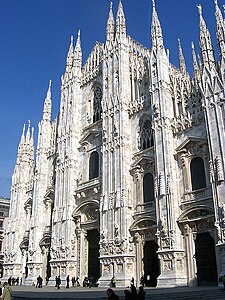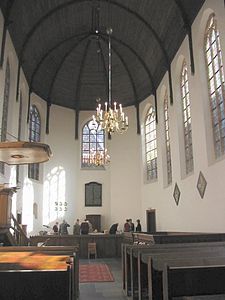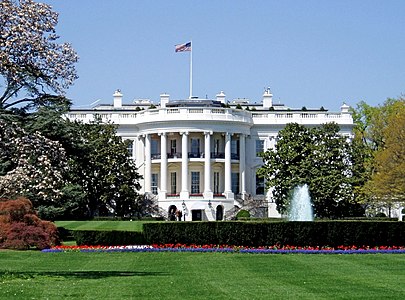White
| White | |
|---|---|
Clockwise, from top left:beluga whale;Pope Francis;Milan Cathedralfaçade;White Cliffs of Dover,England;Masjid al-Haram,Saudi Arabia; Bride at aShinto wedding. | |
| Hex triplet | #FFFFFF |
| sRGBB(r,g,b) | (255, 255, 255) |
| HSV(h,s,v) | (0°, 0%, 100%) |
| CIELChuv(L,C,h) | (100, 0, 0°) |
| Source | HTML/CSS[1] |
| B:Normalized to [0–255] (byte) H:Normalized to [0–100] (hundred) | |
Whiteis thelightestcolorand is achromatic (having nohue). It is the color of objects such assnow,chalk,andmilk,and is the opposite ofblack.White objects fullyreflectandscatterall thevisible wavelengthsoflight.White ontelevisionandcomputer screensis created by a mixture ofred,blue,andgreenlight. The color white can be given with whitepigments,especiallytitanium dioxide.[2]
In ancient Egypt and ancient Rome, priestesses wore white as a symbol of purity, and Romans wore white togas as symbols of citizenship. In the Middle Ages and Renaissance a whiteunicornsymbolized chastity, and a white lamb sacrifice and purity. It was the royal color of the kings of France, and of the monarchist movement that opposed theBolsheviksduring theRussian Civil War(1917–1922).Greek templesandRoman templeswere faced with white marble, and beginning in the 18th century, with the advent ofneoclassical architecture,white became the most common color of new churches, capitols, and other government buildings, especially in the United States. It was also widely used in 20th centurymodern architectureas a symbol of modernity and simplicity.
According to surveys in Europe and the United States, white is the color most often associated with perfection, the good, honesty, cleanliness, the beginning, the new, neutrality, and exactitude.[3]White is an important color for almost all world religions. Thepope,the head of theRoman Catholic Church,has worn white since 1566, as a symbol of purity and sacrifice. InIslam,and in theShintoreligion of Japan, it is worn by pilgrims. In Western cultures and in Japan, white is the most common color forwedding dresses,symbolizing purity and virginity. In many Asian cultures, white is also the color of mourning.[4]
Etymology
The wordwhitecontinuesOld Englishhwīt,ultimately from aCommon Germanic*χwītazalso reflected inOHG(h)wîz,ONhvítr,Goth.ƕeits.The root is ultimately fromProto-Indo-European language*kwid-,surviving also inSanskritśveta"to be white or bright"[5]and Slavonicsvětŭ"light".[6][7]TheIcelandicword for white,hvítur,is directly derived from theOld Norseform of the wordhvítr.Common Germanic also had the word *blankaz( "white, bright, blinding" ), borrowed intoLate Latinas *blancus,which provided the source forRomancewords for "white" (Catalan, Occitan and Frenchblanc,Spanishblanco,Italianbianco,Galician-Portuguesebranco,etc.). The antonym of white is black.
Some non-European languages have a wide variety of terms for white. TheInuitlanguage has seven different words for seven different nuances of white.Sanskrithas specific words for bright white, the white of teeth, the white ofsandalwood,the white of the autumn moon, the white of silver, the white of cow's milk, the white of pearls, the white of a ray of sunlight, and the white of stars. Japanese has six different words, depending upon brilliance or dullness, or if the color is inert or dynamic.[8]
History and art
Prehistoric and ancient history
White was one of the first colors used in art. TheLascaux Cavein France contains drawings of bulls and other animals drawn bypaleolithicartists between 18,000 and 17,000 years ago.Paleolithicartists usedcalciteorchalk,sometimes as a background, sometimes as a highlight, along with charcoal and red and yellow ochre in their vivid cave paintings.[9][10]
Inancient Egypt,white was connected with the goddessIsis.The priests and priestesses of Isis dressed only in white linen, and it was used to wrapmummies.[11]
In Greece and other ancient civilizations, white was often associated with mother's milk. InGreek mythology,the chief godZeuswas nourished at the breast of the nymph Amalthea. In theTalmud,milk was one of four sacred substances, along with wine, honey, and the rose.[12]
The ancient Greeks saw the world in terms of darkness and light, so white was a fundamental color, According toPliny the Elderin hisNatural History,Apelles(4th century BC) and the other famous painters of ancient Greece used only four colors in their paintings; white, red, yellow and black.[13]For painting, the Greeks used the highly toxic pigmentlead white,made by a long and laborious process.[14]
A plain whitetoga,known as atoga virilis,was worn for ceremonial occasions by all Roman citizens over the age of 14–18. Magistrates and certain priests wore atoga praetexta,with a broad purple stripe. In the time of the EmperorAugustus,no Roman man was allowed to appear in the Roman forum without a toga.
The ancient Romans had two words for white;albus,a plain white, (the source of the wordalbino); andcandidus,a brighter white. A man who wanted public office in Rome wore a white toga brightened with chalk, called atoga candida,the origin of the wordcandidate.The Latin wordcanderemeant to shine, to be bright. It was the origin of the wordscandleandcandid.[15]
Inancient Rome,the priestesses of the goddessVestadressed in white linen robes, a whitepallaor shawl, and a white veil. They protected the sacred fire and thepenatesof Rome. White symbolized their purity, loyalty, and chastity.[11]
-
Prehistoric paintings inChauvet Cave,France (30,000 to 32,000 BC)
-
Painting of the goddessIsis(1380–1385 BC). The priests of her cult wore white linen.
-
Paintings of women in white from a tomb (1448–1422 BC).
-
Statue of the chiefVestal Virgin,wearing a whitepallaand a white veil.
Postclassical history
The early Christian church adopted the Roman symbolism of white as the color of purity, sacrifice and virtue. It became the color worn by priests during Mass, the color worn by monks of theCistercian Order,and, underPope Pius V,a former monk of theDominican Order,it became the official color worn by the pope himself. Monks of theOrder of Saint Benedictdressed in the white or gray of natural undyed wool, but later changed to black, the color of humility and penitence.
Postclassical history art, the white lamb became the symbol of the sacrifice of Christ on behalf of mankind. John the Baptist describedChristas thelamb of God,who took the sins of the world upon himself. The white lamb was the center of one of the most famous paintings of the Medieval period, theGhent AltarpiecebyJan van Eyck.[16]
White was also the symbolic color of thetransfiguration.TheGospel of Saint Markdescribes Jesus' clothing in this event as "shining, exceeding white as snow." Artists such as Fra Angelico used their skill to capture the whiteness of his garments. In his painting of the transfiguration at the Convent of Saint Mark inFlorence,Fra Angelico emphasized the white garment by using a lightgold background,placed in an almond-shaped halo.[17]
The whiteunicornwas a common subject of Postclassical history manuscripts, paintings and tapestries. It was a symbol of purity, chastity and grace, which could only be captured by a virgin. It was often portrayed in the lap of the Virgin Mary.[18]
During the Postclassical history, painters rarely ever mixed colors; but in the Renaissance, the influential humanist and scholarLeon Battista Albertiencouraged artists to add white to their colors to make them lighter, brighter, and to addhilaritas,or gaiety. Many painters followed his advice, and the palette of the Renaissance was considerably brighter.[19]
Modern history
Until the 16th century, white was commonly worn by widows as a color of mourning. The widows of the kings of France wore white untilAnne of Brittanyin the 16th century. A white tunic was also worn by many knights, along with a red cloak, which showed the knights were willing to give their blood for the king or Church.
-
The monks of theorder of Saint Benedict(c. 480–542) first dressed in undyed white or gray wool robes, here shown in painting bySodomaon the life of Saint Benedict (1504). They later changed to black robes, the color of humility and penitence.
-
Under Pope Pius V (1504–1572), a former monk of theDominican Order,white became the official color worn by the Pope.
-
The white lamb in theGhent AltarpiecebyJan van Eyck.(1432)
-
TheTransfigurationbyFra Angelico(1440–1442)
-
Mary Stuartwore white in mourning for her husband, KingFrancis II of France,who died in 1560.
18th and 19th centuries
White was the dominant color of architectural interiors in theBaroqueperiod and especially theRococostyle that followed it in the 18th century. Church interiors were designed to show the power, glory and wealth of the church. They seemed to be alive, filled with curves, asymmetry, mirrors, gilding, statuary and reliefs, unified by white.
White was also a fashionable color for both men and women in the 18th century. Men in the aristocracy and upper classes wore powdered white wigs and whitestockings,and women wore elaborate embroidered white and pastel gowns.
After theFrench Revolution,a more austere white (blanc cassé) became the most fashionable color in women's costumes which were modeled after the outfits of Ancient Greece and Republican Rome. Because of the rather revealing design of these dresses, the women wearing them were calledles merveilleuses(the marvellous) by French men of that era.[20]TheEmpire styleunder Emperor Napoléon I was modeled after the more conservative outfits of Ancient Imperial Rome. The dresses were high in fashion but low in warmth considering the more severe weather conditions of northern France; in 1814 the former wife of Napoleon,Joséphine de Beauharnais,caughtpneumoniaand died after taking a walk in the cold night air with TsarAlexander I of Russia.[21]
White was the universal color of both men and women's underwear and of sheets in the 18th and 19th centuries. It was unthinkable to have sheets or underwear of any other color. The reason was simple; the manner of washing linen in boiling water caused colors to fade. When linen was worn out, it was collected and turned into high-quality paper.[22]
The 19th-century American painterJames McNeill Whistler(1834–1903), working at the same time as the French impressionists, created a series of paintings with musical titles where he used color to create moods, the way composers used music. His paintingSymphony in White No. 1 – The White Girl,which used his mistress Joanna Hiffernan as a model, used delicate colors to portray innocence and fragility, and a moment of uncertainty.[23]
-
A highly theatrical whiteRococointerior from the 18th century, at theBasilica at Ottobeuren,inBavaria.
-
White gown ofMarie Antoinette,painted byElisabeth Vigée-Lebrunin 1783.
-
PresidentGeorge Washingtonin a white powdered wig. The first five Presidents of the United States wore dark suits with powdered wigs for formal occasions.
-
Portrait ofJoséphine de Beauharnaisin a classic Empire gown, modeled after the clothing of ancient Rome. (1801), byFrançois Gérard.(The StateHermitage Museum).
-
EmpressMaria Leopoldina of Brazilwearing a white gown and a white pearls necklace, by Luís Schlappriz
-
Symphony in White No. 1 – The White Girl,byJames McNeill Whistler(1862).
-
QueenNatalie of Serbia(1890)
20th and 21st centuries
TheWhite movementwas the opposition that formed against theBolsheviksduring theRussian Civil War,which followed theRussian Revolutionin 1917. It was finally defeated by the Bolsheviks in 1921–22, and many of its members emigrated to Europe.
At the end of the 19th century, lead white was still the most popular pigment; but between 1916 and 1918, chemical companies inNorwayand the United States began to producetitanium white,made fromtitanium oxide.It had first been identified in the 18th century by the German chemistMartin Klaproth,who also discovereduranium.It had twice the covering power of lead white, and was the brightest white pigment known. By 1945, 80 percent of the white pigments sold were titanium white.[24]
The absoluteness of white appealed to modernist painters. It was used in its simplest form by the Russian suprematist painterKazimir Malevichin his 1917 painting 'the white square,' the companion to his earlier 'black square.' It was also used by the Dutch modernist painterPiet Mondrian.His most famous paintings consisted of a pure white canvas with grid of vertical and horizontal black lines and rectangles of primary colors.
Black and white also appealed to modernist architects, such asLe Corbusier(1887–1965). He said a house was "a machine for living in" and called for a "calm and powerful architecture" built of reinforced concrete and steel, without any ornament or frills.[25]Almost all the buildings of contemporary architectRichard Meier,such as his museum inRometo house the ancient RomanAra Pacis,or Altar of Peace, are stark white, in the tradition of Le Corbusier.
-
Poster for theWhite Armyduring the Russian Civil War (1917–22). The poster says: "for a United Russia."
-
TheVilla Savoye(1928–31) by Le Corbusier; Le Corbusier called for a "calm and powerful" architecture built of steel and reinforced concrete, without color or ornament.
Scientific understanding (color science)
Light is perceived by the human visual system as white when the incoming light to the eye stimulates all three types of color sensitivecone cellsin the eye in roughly equal amounts.[26]Materials that do not emit light themselves appear white if their surfaces reflect back most of the light that strikes them in adiffuse way.
White light
-
In theRGB color model,used to create colors on TV and computer screens, white is made by mi xing red, blue and green light at full intensity.
In 1666,Isaac Newtondemonstrated thatwhite lightwas composed of multiple colors by passing it through aprismto break it up into components then using a second prism to reassemble them. Before Newton, most scientists believed that white was the fundamental color oflight.[27]
White light can be generated by the sun, by stars, or by earthbound sources such asfluorescentlamps,white LEDsandincandescent bulbs.On the screen of a color television or computer, white is produced by mi xing theprimary colorsof light: red, green and blue (RGB) at full intensity, a process calledadditive mi xing(see image above). White light can be fabricated using light with only two wavelengths, for instance by mi xing light from a red and cyan laser or yellow and blue lasers. This light will however have very few practical applications since color rendering of objects will be greatly distorted.
The fact that light sources with vastly differentspectral power distributionscan result in a similar sensory experience is due to the way the light is processed by the visual system. One color that arises from two different spectral power distributions is called ametamerism.
Many of the light sources that emit white light emit light at almost all visible wavelengths (sun light, incandescent lamps of variousColor temperatures). This has led to the notion that white light can be defined as a mixture of "all colors" or "all visible wavelengths".[28][29]
A range of spectral distributions of light sources can be perceived as white—there is no single, unique specification of "white light". For example, when buying a "white" light bulb, one might buy one labeled 2700K, 6000K, etc., which produce light having very different spectral distributions, and yet this will not prevent the user from identifying the color of objects that those light bulbs illuminate.[30]
White objects
Color vision allows us to distinguish differentobjectsby their color.In order to do so,color constancycan keep the perceived color of an object relatively unchanged when the illumination changes among various broad (whitish) spectral distributions of light.[30]
The same principle is used in photography and cinematography where the choice ofwhite pointdetermines a transformation of all other color stimuli. Changes in or manipulation of the white point can be used to explain some optical illusions such asThe dress.
While there is no single, unique specification of "white light", there is indeed a unique specification of "white object", or, more specifically, "white surface". A perfectly white surfacediffusely reflects(scatters) all visible light that strikes it, withoutabsorbingany, irrespective of the light's wavelength or spectral distribution.[31][32] Since it does not absorb any of the incident light, white is the lightest possible color. If the reflection is not diffuse but ratherspecular,this describes a mirror rather than a white surface.[33][31]
Reflection of 100% of incident light at all wavelengths is a form of uniform reflectance, so white is an achromatic color, meaning a color withouthue.[34][35]The color stimulus produced by the perfect diffuser is usually considered to be an achromatic stimulus for all illuminants, except for those whose light sources appear to be highly chromatic.[36]
Color constancy is achieved bychromatic adaptation.TheInternational Commission on Illuminationdefineswhite (adapted)as "a color stimulus that an observer who is [chromatically] adapted to the viewing environment would judge to be perfectly achromatic and to have a luminance factor of unity. The color stimulus that is considered to be the adapted white may be different at different locations within a scene.[37]
White features in nature
-
Snow is composed of ice and air; it scatters or reflects sunlight without absorbing other colors of the spectrum.
-
Cumulus cloudslook white because the water droplets reflect and scatter the sunlight without absorbing other colors.
-
TheWhite Cliffs of Dover,made oflimestone
-
Hyams Beach,New South Walesappears white because the sunlight is reflected or scattered by the quartz or limestone sand
Beaches withsandcontaining high amounts ofquartzor erodedlimestonealso appear white, since quartz and limestone reflect or scatter sunlight, rather than absorbing it. Tropical white sand beaches may also have a high quantity of whitecalcium carbonatefrom tiny bits of seashells ground to fine sand by the action of the waves.[38]
TheWhite Cliffs of Dovertake their white color from the large amount ofchalk,made oflimestone,which they contain, which reflects the sunlight.
Snowis a mixture of air and tinyicecrystals. When whitesunlightenters snow, very little of the spectrum is absorbed; almost all of the light is reflected or scattered by the air and water molecules, so the snow appears to be the color of sunlight, white. Sometimes the light bounces around inside the ice crystals before being scattered, making the snow seem to sparkle.[39]
In the case ofglaciers,the ice is more tightly pressed together and contains little air. As sunlight enters the ice, more light of the red spectrum is absorbed, so the light scattered will be bluish.[40]
Cloudsare white for the same reason as ice. They are composed of water droplets or ice crystals mixed with air, very little light that strikes them is absorbed, and most of the light is scattered, appearing to the eye as white. Shadows of other clouds above can make clouds look gray, and some clouds have their own shadow on the bottom of the cloud.[41]
Many mountains with winter or year-round snow cover are named accordingly:Mauna Keameanswhite mountaininHawaiian,Mont Blancmeanswhite mountainin French.Changbai Mountainsliterally meaningperpetually white mountains,marks the border between China and Korea.
White materials
-
Titanium white, made withtitanium dioxide,is the brightest white paint available. It also colors most toothpaste and sunscreen.
-
Zinc whiteis made fromzinc oxide.Zinc oxide is used in paints, suntan lotion, and some foods.
Chalkis a type oflimestone,made of the mineralcalcite,orcalcium carbonate.It was originally deposited under the sea as the scales or plates of tiny micro-organisms calledCoccolithophore.It was the first white pigment used by prehistoric artists in cave paintings. The chalk used on blackboards today is usually made ofgypsumor calcium sulphate, a powder pressed into sticks.
Bianco di San Giovanniis a pigment used in the Renaissance, which was described by the painterCennino Cenniniin the 15th century. It is similar to chalk, made of calcium carbonate withcalcium hydroxide.It was made of dried lime which was made into a powder, then soaked in water for eight days, with the water changed each day. It was then made into cakes and dried in the sun.[42]
Lead whitewas being produced during the 4th century BC; the process is described isPliny the Elder,Vitruviusand the ancient Greek authorTheophrastus.Pieces of lead were put into clay pots which had a separate compartment filled withvinegar.The pots in turn were piled on shelves close to cow dung. The combined fumes of the vinegar and the cow dung caused the lead to corrode intolead carbonate.It was a slow process which could take a month or more. It made an excellent white and was used by artists for centuries, but it was also toxic. It was replaced in the 19th century byzinc whiteandtitanium white.[43]
Titanium whiteis the most popular white for artists today; it is the brightest available white pigment, and has twice the coverage of lead white. It first became commercially available in 1921. It is made out oftitanium dioxide,from the mineralsbrookite,anatase,rutile,orilmenite,currently the major source. Because of its brilliant whiteness, it is used as a colorant for mosttoothpasteandsunscreen.[44]
Zinc whiteis made fromzinc oxide.It is similar to but not as opaque as titanium white. It is added to some foods toenrichthem with zinc, an importantnutrient.[45]Chinese whiteis a variety of zinc white made for artists.[46]
Some materials can be made to look "whiter than white", this is achieved usingoptical brighteneragents (OBA). These are chemical compounds that absorb light in theultravioletand violet region (usually 340–370 nm) of the electromagnetic spectrum, and re-emit light in the blue region (typically 420–470 nm). OBAs are often used in paper and clothing to create an impression of very bright white. This is due to the fact that the materials actually send out more visible light than they receive.
Bleach and bleaching
Bleachingis a process for whitening fabrics which has been practiced for thousands of years. Sometimes it was simply a matter of leaving the fabric in the sun, to be faded by the bright light. In the 18th century several scientists developed varieties ofchlorine bleach,includingsodium hypochloriteandcalcium hypochlorite(bleaching powder).[47]Bleaching agents that do not contain chlorine most often are based onperoxides,such ashydrogen peroxide,sodium percarbonateandsodium perborate.While most bleaches are oxidizing agents, a fewer number arereducing agentssuch assodium dithionite.
Bleaches attack thechromophores,the part of a molecule which absorbs light and causes fabrics to have different colors. An oxidizing bleach works by breaking thechemical bondsthat make up the chromophore. This changes the molecule into a different substance that either does not contain a chromophore, or contains a chromophore that does not absorbvisible light.A reducing bleach works by convertingdouble bondsin the chromophore intosingle bonds.This eliminates the ability of the chromophore to absorb visible light.[48]
Sunlight acts as a bleach through a similar process. High energyphotonsof light, often in thevioletorultravioletrange, can disrupt the bonds in the chromophore, rendering the resulting substance colorless.[49]
Some detergents go one step further; they containfluorescentchemicals which glow, making the fabric look literally whiter than white.[50]
In the natural world
Astronomy

Awhite dwarfis astellar remnantcomposed mostly ofelectron-degenerate matter.They are verydense;a white dwarf's mass is comparable to that of the Sun and its volume is comparable to that of the Earth. Its faintluminositycomes from theemissionof storedthermal energy.A white dwarf is very hot when it is formed, but since it has no source of energy, it will gradually radiate away its energy and cool down. This means that its radiation, which initially has a highcolor temperature,will lessen and redden with time. Over a very long time, a white dwarf will cool to temperatures at which it will no longer emit significant heat or light, and it will become a coldblack dwarf.[51]However, since no white dwarf can be older than theAge of the universe(approximately 13.8 billion years),[52]even the oldest white dwarfs still radiate at temperatures of a few thousandkelvins,and no black dwarfs are thought to exist yet.
AnA-type main-sequence star(A V) or A dwarf star is amain-sequence(hydrogen-burning)starofspectral typeA andluminosity classV. These stars havespectrawhich are defined by stronghydrogen Balmer absorption lines.[53][54]They havemassesfrom 1.4 to 2.1 times themassof theSunandsurface temperaturesbetween 7600 and 11 500K.[55]
Biology
White animals use their color as a form of camouflage in winter. Animals such aspenguinsarecountershadedwith white bellies, again as camouflage.
-
Thedoveis an international symbol of peace.
-
TheBeluga whalelives in Arctic and sub-arctic waters, where its color is an effective camouflage
-
APolar Bearin Alaska. Its color is a form of camouflage
Religion and culture
-
Statuette of the goddessAstarte.
-
Pope Francisat theVatican.Popes have traditionally worn white since 1566.
-
A pilgrim in Japan.
-
The Buddhist deityTarais often depicted with white skin.
White is an important symbolic color in most religions and cultures, usually because of its association with purity.
In theRoman Catholic Church,white is associated withJesus Christ,innocence and sacrifice. Since theMiddle Ages,priests wear a whitecassockin many of the most important ceremonies and religious services connected with events in the life of Christ. White is worn by priests atChristmas,duringEaster,and during celebrations connected with the other events of the life of Christ, such as Corpus Christi Sunday, andTrinity Sunday.It is also worn at the services dedicated to theVirgin Mary,and to thoseSaintswho were notmartyred,as well as other special occasions, such as the ordination of priests and the installation of new bishops. Within the hierarchy of the church, lighter colors indicated higher rank; ordinarypriestswore black;bishopswore violet,cardinalswore red, and outside a church, only thepopewould wear white.[56](Popes occasionally wore white in the Middle Ages, but usually wore red. Popes have worn white regularly since 1566, whenPope Pius V,a member of theDominican Order,began the practice.) White is the color of theDominican Order.
Inthe Church of Jesus Christ of Latter-day Saintsthe color white is used as a symbol of purity, innocence, and cleanliness, particularly inreligious ceremoniessuch as baptism[57]andtempleceremonies.[58]In temple ceremonies, white clothing is also worn by all participants, both men and women, to also symbolize unity and equality before God.[59][60]
In Islam, white clothing is worn during required pilgrimage to Mecca, orIhrampilgrimage(Hajj)Hajj.CalledIhram clothing,men's garments often consist of two white un-hemmed sheets (usually towelling material). The top (theriḍā) is draped over the torso and the bottom (theizār) is secured by a belt; plus a pair of sandals. Women's clothing varies considerably and reflects regional as well as religious influences. Ihram is typically worn duringDhu al-Hijjah,the last month in theIslamic calendar.
White also has a long history of use as a religious and political symbol in Islam, beginning with the white banner that tradition ascribes to theQuraysh,the tribe to whichMuhammadbelonged. TheUmayyad dynastyalso used white as its dynastic color, following the personal banner of its founder,Mu'awiya I,while theShi'iteFatimidsalso chose white to highlight their opposition to theSunniAbbasid Caliphate,whose color was black.[61]
In Judaism, during the rituals ofYom Kippur,the ceremony ofatonement,therabbidresses in white, as do the members of the congregation, to restore the bonds between God and his followers.
In the traditional Japanese religion ofShinto,an area of white gravel or stones marks a sacred place, called aniwa.These places were dedicated to thekami,spirits which had descended from the heavens or had come across the sea. Later, temples ofZen Buddhismin Japan often featured aZen garden,where white sand or gravel was carefully raked to resemble rivers or streams, designed as objects of meditation.[62]
In the temples ofthe Church of Jesus Christ of Latter-day Saints(LDS Church or also known as Mormon), White clothing is worn inside once they have been officially dedicated, due to white symbolizing purity.[63]
Many religions symbolize heaven by using a sky with white clouds. This phenomenon is not limited to western culture; inYoruba religion,the orishaObatalain theIfátradition is represented by white. Obatala is associated with calmness, morality, old age, and purity.
InTheosophyand similar religions, thedeitiescalled theGreat White Brotherhoodare said to have whiteauras.[64]
In some Asian and Slavic cultures, white is considered to be a color that represents death.[65]White also represented death inancient Egypt,representing the lifeless desert that covered much of the country; black was held to be the color of life, representing the mud-covered fertile lands created by the flooding of theNileand giving the country its name (Kemet,or "black land" ).
In China, Korea, and some other Asian countries, white, or more precisely, the whitish color of undyed linen, is the color of mourning and funerals.[66]
In traditional China, undyed linen clothing is worn at funerals. As time passes, the bereaved can gradually wear clothing dyed with colors, then with darker colors. Small sacks ofquicklime,one for each year of the life of the deceased are placed around the body to protect it against impurity in the next world, and white paper flowers are placed around the body.[67]
In China and other Asian countries, white is the color of reincarnation, showing that death is not a permanent separation from the world.[68]
In China, white is associated with the masculine (theyangof theyinandyang); with theunicornandtiger;with the fur of an animal; with the direction of west; with the element metal; and with theautumnseason.[69]
In Japan, undyed linen white robes are worn by pilgrims for rituals of purification, and bathing in sacred rivers. In the mountains, pilgrims wear costumes of undyedjuteto symbolize purity. A white kimono is often placed in the casket with the deceased for the journey to the other world, as white represents death sometimes.[70]Condolence gifts, orkooden,are tied with black and white ribbons and wrapped in white paper, protecting the contents from the impurities of the other world.[71]
In India, it is the color of purity, divinity, detachment and serenity. In Hindi, the name Sweta means white.
InTibetan Buddhism,white robes were reserved for the lama of a monastery.
In theBedouinand some other pastoral cultures, there is a strong connection between milk and white, which is considered the color of gratitude, esteem, joy, good fortune and fertility.[72]
InPaganism,it is used for peace, innocence, illumination, and purity. It can also be used to stand for any color.[73]White is also associated with cleansing, a Pagan practice that cleans something using the elements. InWicca,a white-handled knife called thebolineis used in rituals.[74]
Political movements

White is often associated withmonarchism.The association originally came from the white flag of theBourbondynasty of France. White became the banner of the royalist rebellions against theFrench Revolution(seeRevolt in the Vendée).
During theCivil Warwhich followed theRussian Revolutionof 1917, the White Army, a coalition of monarchists, nationalists and liberals, fought unsuccessfully against theRed Armyof theBolsheviks.A similar battle between reds and whites took place during theCivil War in Finlandin the same period.
The Ku Klux Klan is aracistandanti-immigrantorganization which flourished in theSouthern United Statesafter theAmerican Civil War.They wore white robes and hoods, burned crosses and violently attacked and murdered black Americans.
In Iran, theWhite Revolutionwas a series of social and political reforms launched in 1963 by the lastShahofIranbefore his downfall.
White is also associated with peace and passive resistance. Thewhite ribbonis worn by movements denouncingviolence against womenand theWhite Rosewas a non-violentresistancegroup inNazi Germany.
Selected national flags featuring white
White is a common color in national flags, though its symbolism varies widely. The white in theflag of the United Statesandflag of the United Kingdomcomes from traditional redSt George's Crosson a white background of the historicflag of England.The white in theflag of Francerepresents either the monarchy or "white, the ancient French color" according to theMarquis de Lafayette.
Many flags in the Arab world use the colors of theflag of the Arab Revoltof 1916; red, white, green and black. These include the flags ofEgypt,Palestine,Jordan,Syria,KuwaitandIraq.
ThePhilippinesalso use white as their symbol for unity intheir flag.
-
Flag of theBourbons,royal family of France until theFrench Revolutionand during the restoration of the monarchy afterwards.
-
TheFlag of Vatican City(1929). The white and gold colors symbolize the colors of the keys to heaven given byJesus ChristtoSaint Peter:the gold of spiritual power, the white of worldly power. The keys have been the Papal symbol since the 13th century.
-
Theflag of the Netherlands(1572) was the first red, white and blue national flag.Peter the Greatadopted the colors for theflag of Russia.
-
Theflag of India(1947). White represents "light, the path of truth".[75]
-
Theflag of Ireland.According to the Irish government press office, citingThomas Francis Meagher,"The green represents the older Gaelic tradition while the orange represents the supporters of William of Orange. The white in the centre signifies a lasting truce between Orange and Green".[76]
Idioms and expressions
- Towhitewashsomething is to conceal an unpleasant reality.
- Awhite lieis an innocent lie told out of politeness.
- White noiseis the noise of all the frequencies of sound combined. It is used to cover up unwanted noise.
- Awhite knightin finance is a friendly investor who steps in to rescue a company from a hostile takeover.
- White-collar workersare those who work in offices, as opposed toblue-collar workers,who work with their hands in factories or workshops.
- Awhite paperis an authoritative report on a major issue by a team of experts; a government report outlining policy; or a short treatise whose purpose is to educate industry customers. Associating a paper with white may signify clean facts and unbiased information.
- Thewhite featheris a symbol of cowardice, particularly in Britain.[77]It supposedly comes fromcockfightingand the belief that acockerelsporting a white feather in its tail is likely to be a poor fighter. At the beginning of the First World War, women in England were encouraged to give white feathers to men who had not enlisted in the British Armed Forces.[78]
- In the US, awhite shoe firmis an older, conservative firm, usually in a field such as banking or law. The phrase derives from the "white bucks", laced suede or buckskin shoes with red soles, long popular in theIvy Leaguecolleges.[79]
- In Russia, the nobility are sometimes described aswhite bone(белая кость, bélaya kost'), commoners asblack bone.[80]
Associations and symbolism
Innocence and sacrifice
In Western culture, white is the color most often associated with innocence, or purity.[81]In theBibleand in Temple Judaism, white animals such as lambs weresacrificed to expiate sins.The whitelilyis considered the flower of purity and innocence, and is often associated with theVirgin Mary.
Beginnings
White is the color in Western culture most often associated with beginnings. In Christianity, children are baptized and first takecommunionwearing white. Christ afterthe Resurrectionis traditionally portrayed dressed in white.
QueenElizabeth IIwore white when she opened each session of British Parliament. In high society,debutantestraditionally wear white for their first ball.
Weddings
White has long been the traditional color worn by brides at royal weddings, but the white wedding gown for ordinary people appeared in the 19th century. Before that time, most brides wore their best Sunday clothing, of whatever color.[82]The white lace wedding gown ofQueen Victoriain 1840 had a large impact on the color and fashion of wedding dresses in both Europe and America down to the present day.
-
The wedding dress ofQueen Victoria(1840) set the fashion for wedding dresses of the Victorian era and for the 20th century.
-
TheBarong Tagalogis a traditionalfolk costumeof thePhilippines;this attire is worn on formal gatherings and weddings.
-
Japanese formal wedding dress still used today.
Cleanliness
White is the color most associated with cleanliness. Objects which are expected to be clean, such as refrigerators and dishes, toilets and sinks, bed linen and towels, are traditionally white. White was the traditional color of the coats of doctors, nurses, scientists and laboratory technicians, though nowadays a pale blue or green is often used. White is also the color most often worn by chefs, bakers, and butchers, and the color of the aprons of waiters in French restaurants.[83]
Ghosts, phantoms and two of the Four Horsemen of the Apocalypse
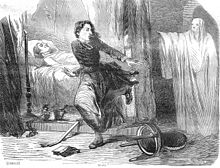

White is the color associated withghostsand phantoms. In the past the dead were traditionally buried in a white shroud. Ghosts are said to be the spirits of the dead who, for various reasons, are unable to rest or enter heaven, and so walk the earth in their white shrouds. White is also connected with the paleness of death. A common expression in English is "pale as a ghost."[84]
TheWhite Lady,Weiße Frau, ordame blancheis a familiar figure in English, German and French ghost stories. She is a spectral apparition of a female clad in white, in most cases the ghost of an ancestor, sometimes giving warning about death and disaster. The most notable Weiße Frau is the legendary ghost of the GermanHohenzollerndynasty.
Seeing a white horse in a dream is said to be presentiment of death.[85]In theBook of Revelation,the last book in theNew Testamentof the Bible, theFour Horsemen of the Apocalypseare supposed to announce theApocalypsebefore theLast Judgement.The man on awhite horsewith a bow and arrow, according to different interpretations, represents either War and Conquest, theAntichrist,or Christ himself, cleansing the world of sin. Death rides a horse whose color is described in ancient Greek askhlōros(χλωρός) in the originalKoine Greek,[86]which can mean either green/greenish-yellow or pale/pallid.[87]
Opposite of black
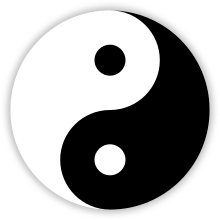
Black and white often represent the contrast between light and darkness, day and night, male and female, good and evil.
Intaoism,the two complementary natures of the universe,yin and yang,are often symbolized in black and white, Ancient games of strategy, such asgoandchess,use black and white to represent the two sides.
In the French monarchy, white symbolized the King and his powerpar la grâce de Dieu( "by the grace of God" ) and in contrast black was the color of the queen who according to the Salic Law which excluded women from the throne (and thus from power) could never become the ruling monarch.
Black and white also often represent formality and seriousness, as in the costumes of judges and priests, business suits, of formal evening dress. Monks of theDominican Orderwear a black cloak over a white habit. Until 1972, agents of theFederal Bureau of Investigationwere informally required by FBI DirectorJ. Edgar Hooverto wear white shirts with their suits, to project the correct image of the FBI.[88]
Names taken from white
White is the source of more names for women in western countries than any other color.[89]Names taken from white include Alba, Albine (Latin). Blandine, Blanche and Blanchette (French); Bianca (Italian); Jennifer (Celt); Genevieve, Candice (from Latin Candida); Fenela, Fiona and Finola (Irish); Gwendoline, Gwenael, Nol(g)wen (white woman) (Celt), Nives (Spanish) and Zuria (Basque).[90]
In addition many names come from white flowers: Camille, Daisy, Lily, Lili, Magnolie, Jasmine, Yasemine, Leila, Marguerite, Rosalba, and others.
Other names come from the whitepearl;Pearl, Margarita (Latin), Margaret, Margarethe, Marga, Grete, Rita, Gitta, Marjorie, Margot.
Temples, churches and government buildings
Since ancient times, temples, churches, and many government buildings in many countries have traditionally been white, the color associated with religious and civic virtue. TheParthenonand other ancient temples of Greece, and the buildings of theRoman Forumwere mostly made of or clad in white marble, though it is now known that some of these ancient buildings were actually brightly painted.[91]The Roman tradition of using white stone for government buildings and churches was revived in the Renaissance and especially in theneoclassic styleof the 18th and 19th centuries. White stone became the material of choice for government buildings in Washington, D.C., and other American cities. European cathedrals were also usually built of white or light-colored stone, though many darkened over the centuries from smoke and soot.
The Renaissance architect and scholarLeon Battista Albertiwrote in 1452 that churches should be plastered white on the inside, since white was the only appropriate color for reflection and meditation.[92]TraditionalCistercian architecturealso places a high emphasis on white for similar reasons.[93]After the Reformation,Calvinistchurches in theNetherlandswere whitewashed and sober inside, a tradition that was also followed in theProtestantchurches of New England, such asOld North ChurchinBoston.
-
Although theParthenonin Athens (5th century BC) is white today, it was originally painted with many colors
-
TheCathedral of Milan(1386–1965)
-
Dutch Reformed Churchinterior inDelft,the Netherlands (16th century)
-
Interior ofOld North Church,Boston (1723)
-
TheWhite House(1801), Washington, D.C.
Ethnography
People of theCaucasian raceare often referred to simply as white. TheUnited States Census Bureaudefineswhite peopleas those "having origins in any of the original peoples of Europe, the Middle East, or North Africa. It includes people who reported" white "or wrote in entries such as Irish, German, Italian, Lebanese, Near Easterner, Arab, or Polish."[94]White people constitute the majority of the U.S. population, with a total of 204,277,273 or 61.6% of the population in the2020 United States Census.
White flag
Awhite flaghas long been used to represent either surrender or a request for a truce. It is believed to have originated in the 15th century, during theHundred Years' Warbetween France and England, when multicolored flags, as well as firearms, came into common use by European armies. The white flag was officially recognized as a request to cease hostilities by theGeneva Conventionof 1949.[95]
Vexillology and heraldry
In Englishheraldry,white orsilversignified brightness, purity, virtue, and innocence.[96]
See also
References
- ^"CSS Color Module Level 3".19 June 2018.Archivedfrom the original on 29 November 2017.Retrieved4 April2007.
- ^Völz, Hans G.; Kischkewitz, Jürgen; Woditsch, Peter; Westerhaus, Axel; Griebler, Wolf-Dieter; De Liedekerke, Marcel; Buxbaum, Gunter; Printzen, Helmut; Mansmann, Manfred; Räde, Dieter; Trenczek, Gerhard; Wilhelm, Volker; Schwarz, Stefanie; Wienand, Henning; Adel, Jörg; Adrian, Gerhard; Brandt, Karl; Cork, William B.; Winkeler, Heinrich; Mayer, Wielfried; Schneider, Klaus; Leitner, Lutz; Kathrein, Hendrik; Schwab, Ekkehard; Jakusch, Helmut; Ohlinger, Manfred; Veitch, Ronald; Etzrodt, Günter; Pfaff, Gerhard; Franz, Klaus-Dieter. "Pigments, Inorganic".Ullmann's Encyclopedia of Industrial Chemistry.Weinheim: Wiley-VCH.doi:10.1002/14356007.a20_243.pub2.ISBN3527306730.
- ^Heller, (2000), pp. 130–46.
- ^Heller (2000), p. 137.
- ^Sanskrit-Lexicon.uni-koeln.deArchived13 February 2010 at theWayback Machine(Monier Williams Sanskrit-English Dictionary,p. 1106).
- ^Max Vasmer,Этимологический словарь русского языка,т.III, Москва 1971, 575–76.
- ^OED;Harper, Douglas (November 2001)."Online Etymology Dictionary".Archivedfrom the original on 10 July 2009.Retrieved26 March2008.
- ^Varichon 2005,pp. 11–12.
- ^Pastoureau, Michel (2005).Le petit livre des couleurs,p. 47.
- ^"Pigments through the Ages – Prehistory".Archivedfrom the original on 3 October 2018.Retrieved30 December2016.
- ^abVarichon, Anne (2000).Couleurs – pigments et teintures dans les mains des peuples,p. 16.
- ^Varichon, Anne (2000).Couleurs – pigments et teintures dans les mains des peuples,p. 21.
- ^Gage, John (1993).Color and Culture,p. 29.
- ^St. Clair, Kassia (2016).The Secret Lives of Color,pp. 43-44.
- ^Webster's New World Dictionary of the American Language,1964.
- ^Zuffi, Stefano (2012).Color in Art,pp. 224–25.
- ^Zuffi, Stefano (2012).Color in Art,pp. 226–27.
- ^Zuffi, Stefano.Color in Art,pp. 232–33.
- ^John Gage, (1993),Color and Culture,pp. 117–19.
- ^Chronique des métropoles:Paris, p. 83, publ. Dargaud 2003
- ^Roberts, Andrew (2014).Napoleon – A Life.Viking Press,ISBN978-0-670-02532-9,pp. 723–24
- ^Michel Pastoureau (2005),Le petit livre des couleurs,pp. 50–51.
- ^Stefano Zuffi (2012),Color in Art,p. 260.
- ^Ball, Philip (2001).Bright Earth, Art and the Invention of Colour,pp. 484–85.
- ^Le Corbusier.Toward an Architecture.Translated by John Goodman. Los Angeles: Getty Research Institute, 2007
- ^Wyszecki & Stiles.Color Science(Second ed.). p. 506.
- ^Kassia St. Clair (2016)The Secret Lives of Color,p. 17
- ^"Colours of light".Science Learning Hub. Archived fromthe originalon 20 November 2016.Retrieved4 April2015.
- ^"Color: White Light, Reflection & Absorption".study.Archivedfrom the original on 10 April 2015.Retrieved4 April2015.
- ^abFinlayson, G. D. and G. Schaefer (2001). "Convex and non-convex illuminant constraints for dichromatic colour constancy". IN:Proceedings of the 2001 ee.EE Computer Society Conference on Computer Vision and Pattern Recognition. CVPR 2001doi:10.1109/CVPR.2001.990528"the perceived colour of an object is more or less independent of the illuminant; a white paper appears white both outdoors under bluish daylight and indoors under yellow tungsten light, though the responses of the eyes' colour receptors... will be quite different for the two cases."
- ^abProgram of Color Science / Munsell Color Science Laboratory, Rochester Institute of Technology,Complete Color FAQ."A perfect mirror reflects all of the light that strikes it... A perfect white also reflects all the light incident on it, but reflects that light diffusely. In other words, the white scatters the incident light in all directions."
- ^Harold, Richard W. "An Introduction to Appearance Analysis". IN:GATFWorld, the magazine of the Graphic Arts Technical Foundation,SS Number 84. "The typical reference is a white standard that has been calibrated relative to the perfect white reflecting diffuser (100% reflectance at all wavelengths)."
- ^Wyszecki & Stiles.Color Science(Second ed.).
Regular reflection (or specular, or mirrorr reflection) follows the laws of optical reflection without diffusion (scattering), as exemplified by mirrors.
- ^"Does hue affect the perception of grayness?", R Shamey, W Sawatwarakul, Sha Fu, 13 May 2014,doi:10.1002/col.21894, Color Research & Application,Volume40,Issue 4, p. 374.http://onlinelibrary.wiley /doi/10.1002/col.21894/pdfArchived8 October 2017 at theWayback Machine"The usual definition of achromatic color is 'a perceived color without hue.' The colorimetric definition is that of an object with a flat reflectance function at a given level of reflectance, or one of its metamers."
- ^"17-11 achromatic color".International Commission on Illumination (CIE). 2014. Archived fromthe originalon 4 February 2020.Retrieved8 October2017.
in the perceptual sense: perceived colour devoid of hue
- ^"17-12 achromatic stimulus".International Commission on Illumination (CIE). 2014. Archived fromthe originalon 3 February 2020.Retrieved8 October2017.
- ^"17-1427 white, adapted".International Commission on Illumination (CIE). 2014. Archived fromthe originalon 17 July 2018.Retrieved4 April2015.
- ^"Science of summer – where does beach sand come from?"Archived27 May 2017 at theWayback MachineLivescience
- ^"Why Snow is White (Even Though Water is Clear)".Archived fromthe originalon 17 October 2016.Retrieved30 December2016.
- ^Survey, U.S. Geological."USGS Glacier Studies".Archivedfrom the original on 24 November 2005.Retrieved30 December2016.
- ^"Why Are Clouds White?".Archived fromthe originalon 6 September 2014.Retrieved30 December2016.
- ^"Pigments through the Ages – Overview – Lime white".Archivedfrom the original on 2 August 2018.Retrieved30 December2016.
- ^Ball, Philip (2000).Bright Earth, Art and the Invention of Colour,p. 99.
- ^"Pigments through the Ages – Overview – Titanium white".Archivedfrom the original on 14 October 2018.Retrieved30 December2016.
- ^Burdock, George A. (1997).Encyclopedia of Food and Color Additives.CRC Press. p. 2991.ISBN9780849394140.Archivedfrom the original on 17 March 2024.Retrieved21 October2020.
- ^Kassia St. Clair (2016)The Secret Lives of Color,p. 40
- ^"Bleaching".Encyclopædia Britannica(9th Edition (1875) and 10th Edition (1902) ed.).Archivedfrom the original on 24 May 2012.Retrieved2 May2012.
- ^Field, Simon Q (2006)."Ingredients – Bleach".Science Toys.Archivedfrom the original on 3 March 2012.Retrieved2 March2006.
- ^Bloomfield, Louis A. (2006)."Sunlight".How Things Work.Archived fromthe originalon 11 May 2013.Retrieved23 February2012.
- ^Heller (2000), p. 144.
- ^Richmond, M."Late stages of evolution for low-mass stars".Lecture notes, Physics 230.Rochester Institute of Technology.Archivedfrom the original on 4 September 2017.Retrieved3 May2007.
- ^"Cosmic Detectives".The European Space Agency (ESA). 2 April 2013.Archivedfrom the original on 11 February 2019.Retrieved26 April2013.
- ^Stellar Spectral TypesArchived2 January 2009 at theWayback Machine,entry at hyperphysics.phy-astr.gsu.edu, accessed on line 19 June 2007.
- ^"An Introduction to Modern Astrophysics" by B.W Caroll and D.A Ostlie 1996 edition, chapter 8
- ^Empirical bolometric corrections for the main-sequenceArchived9 November 2017 at theWayback Machine,Habets, G. M. H. J. and J. R. W. Heintze,Astronomy and Astrophysics Supplement46(November 1981), pp. 193–237, Tables VII and VIII.
- ^Heller (2000), p. 132.
- ^"Chapter 15: The Covenant of Baptism".Doctrines of the Gospel Teacher Manual.The Church of Jesus Christ of Latter-day Saints.Archived fromthe originalon 16 December 2021.Retrieved16 December2021.
- ^"Preparing to Enter the Holy Temple".Preparing to Enter the Holy Temple.The Church of Jesus Christ of Latter-day Saints.Archived fromthe originalon 16 December 2021.Retrieved16 December2021.
- ^"Lesson 5: Learning from the Lord through Symbols".Endowed from on High: Temple Preparation Seminar Teacher's Manual.The Church of Jesus Christ of Latter-day Saints.Archived fromthe originalon 16 December 2021.Retrieved16 December2021.
- ^"Why Symbols?".Ensign.The Church of Jesus Christ of Latter-day Saints.February 2007. Archived fromthe originalon 16 December 2021.Retrieved16 December2021.
- ^Hathaway, Jane (2012).A Tale of Two Factions: Myth, Memory, and Identity in Ottoman Egypt and Yemen.SUNY Press. pp. 96–97.ISBN978-0-7914-8610-8.Archivedfrom the original on 17 March 2024.Retrieved2 April2018.
- ^Young, David and Michigo (2005).The Art of the Japanese Garden,p. 64.
- ^Whalen, William J. (1962).The Latter Day Saints in the Modern Day World.
- ^Prophet, Elizabeth ClareThe Great White Brotherhood in the Culture, History and Religion of AmericaSummit University Press, 1975
- ^Dreyfuss, Henry.Symbol Sourcebook: An Authoritative Guide to International Graphic Symbols.Archivedfrom the original on 8 December 2019.Retrieved27 May2010.
- ^Heller (2000), pp. 136–37.
- ^Varichon, Anne (2000).Couleurs – pigments et teintures dans les mains des peuples,p. 33.
- ^Heller (2000), p. 136.
- ^Heller (2000), p. 84.
- ^"Japanese Funeral".Archivedfrom the original on 14 October 2018.Retrieved30 December2016.
- ^"Japanese Funeral Customs".Archivedfrom the original on 29 July 2018.Retrieved30 December2016.
- ^Varichon, Anne (2000).Couleurs – pigments et teintures dans les mains des peuples,pp. 16–35.
- ^"Magical Properties of Colors".Wicca Living.Archivedfrom the original on 22 January 2021.Retrieved28 January2021.
- ^Waite, Arthur Edward (1911).The Book of Ceremonial Magic.London: William Rider, p. 154.
- ^"Flag Code of India"(PDF).Ministry of Home Affairs (India). Archived fromthe original(PDF)on 21 January 2013.Retrieved22 March2014.
- ^"The National Flag"(PDF).Government of Ireland.1 November 2018.Archived(PDF)from the original on 17 March 2024.Retrieved17 March2024.
- ^"White Feather".Etymonline.Archivedfrom the original on 3 July 2017.Retrieved6 June2012.
- ^Guardian reviewArchived6 January 2017 at theWayback MachineofWe Will Not Fight...: The Untold Story of World War One's Conscientious Objectorsby Will Ellsworth-Jones
- ^Safire, William(9 November 1997)."On Language; Gimme the Ol' White Shoe".The New York Times.Archivedfrom the original on 27 May 2022.Retrieved23 February2017.
- ^Smith, Douglas (2 October 2012).Former People: The Final Days of the Russian Aristocracy.Macmillan.ISBN978-1-4668-2775-2.
- ^Heller (2000).
- ^Heller (2000), pp. 144–48.
- ^Heller (2000), pp. 135–36.
- ^Heller (2000), p. 137.
- ^Zuffi, Stefano (2012).Color in Art,p. 254.
- ^Codex SinaiticusArchived30 October 2013 at theWayback Machine,Rev 6:8.
- ^Henry George Liddell and Robert Scott,A Greek-English LexiconArchived6 April 2014 at theWayback Machine:χλωρός.
- ^Lydon, Christopher, "J. Edgar Hoover Made the FBI Formidable With Politics, Publicity and Results",The New York Timesobituary, 3 May 1972
- ^Heller (2000), p. 133.
- ^Heller 2000,pp. 133–34.
- ^John Gage (1993),Couleur et Culture,pp. 11–29.
- ^Stefano Zuffi,Color in Art(2012), p. 244.
- ^Sternberg, Maximillian (28 August 2018)."Cistercian Architecture".Archivedfrom the original on 23 April 2021.Retrieved15 June2021.
- ^"The White Population: 2000"(PDF).United States Census Bureau. August 2001.Archived(PDF)from the original on 25 June 2005.Retrieved10 March2011.
- ^Stefano Zuffi (2012),Color in Art,p. 256.
- ^American Girls Handy Book: How to Amuse Yourself and Others,by Adelia Beard.ISBN978-0-87923-666-3,p. 369.
Bibliography
- Ball, Philip (2001).Bright Earth – Art and the Invention of Colour.Penguin Group.ISBN978-2-7541-0503-3.
- Gage, John (2009).La Couleur dans l'art.Thames & Hudson.ISBN978-2-87811-325-9.
- Heller, Eva (2000).Psychologie de la couleur – Effets et symboliques.Pyramyd (French translation).ISBN978-2-35017-156-2.
- Pastoureau, Michel (2005).Le petit livre des couleurs.Editions du Panama.ISBN978-2-7578-0310-3.
- St. Clair, Kassia (2016).The Secret Lives of Colour.London: John Murray.ISBN9781473630819.OCLC936144129.
- Varichon, Anne (2005).Couleurs – pigments et teintures dans les mains des peuples(in French). Editions de Seuil.ISBN978-2-02-084697-4.
- Zuffi, Stefano (2012).Color in Art.Abrams.ISBN978-1-4197-0111-5.









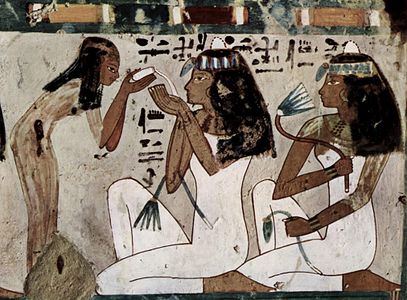


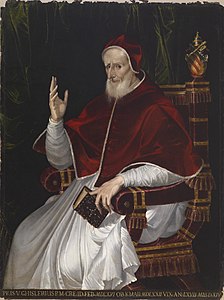
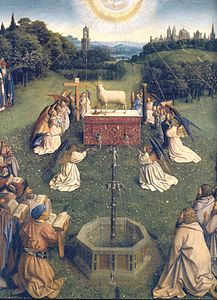
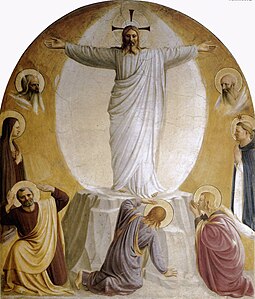
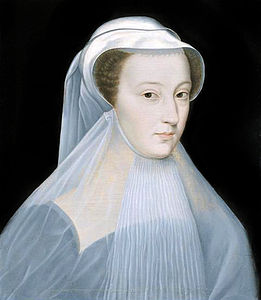


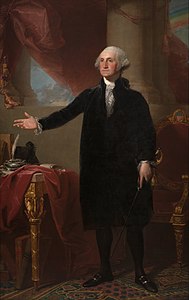
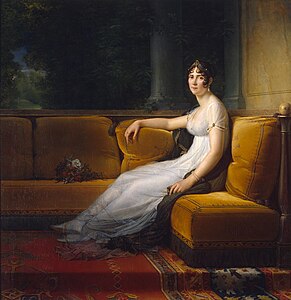







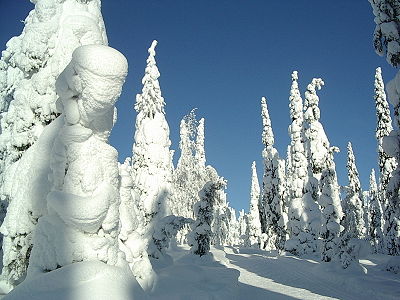



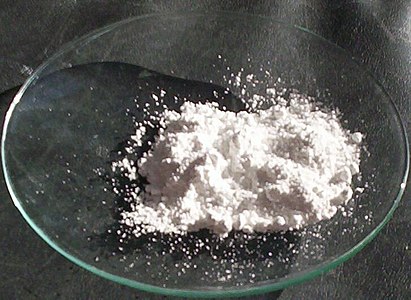









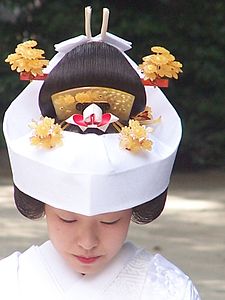





![The flag of Ireland. According to the Irish government press office, citing Thomas Francis Meagher, "The green represents the older Gaelic tradition while the orange represents the supporters of William of Orange. The white in the centre signifies a lasting truce between Orange and Green".[76]](https://upload.wikimedia.org/wikipedia/commons/thumb/4/45/Flag_of_Ireland.svg/120px-Flag_of_Ireland.svg.png)




